« Agartala, Capital of Tripura State | Main | The Best 8 Pounds I Ever Spent »
May 06, 2005
Dhaka, capital of Bangladesh
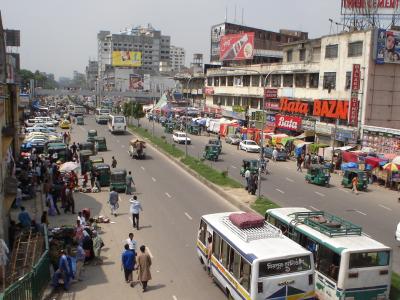
Downtown Dhaka
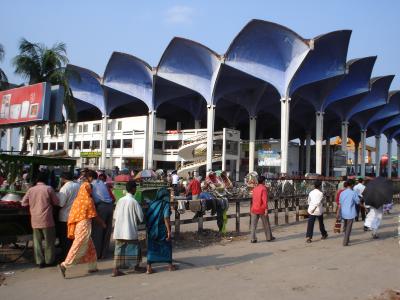
Kamalapur Station
I had been considering a visit to Bangladesh at the end of this trip, if the monsoon had abated somewhat, but whilst in Agartala, I found that there was a Bangladesh Consulate that issues visas. A trip west through Bangladesh does away with the long haul by road back through Assam and the top of West Bengal, besides being a new and interesting country for me, so the decision was not hard to make. I caught the daily bus between Agartala and Dhaka, and despite some demands for 10% of my Indian cash at the border, and the CRAZY driving habits of the bus drivers on the fast and good quality roads in Bangladesh, the journey was uneventful, and I arrived at Dhaka late in the evening, and found an excellent room at the Hotel Alfaruque, near to the main Kamalapur railway station.
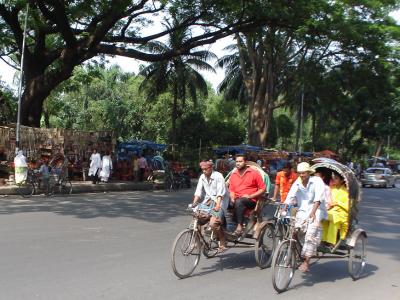
Bicycle Rickshaws
If there is one thing that immediately strikes the visitor to Dhaka, and indeed Bangladesh itself, it is the vast numbers of cycle rickshaws. They are to be seen everywhere, in town and country; the main roads have specially-marked rickshaw lanes to help them avoid the suicidaly speeding buses. The charges are very reasonable: even as a foreigner, I was only paying about 10 taka per kilometre. The current exchange rate is about 120 taka to the pound.
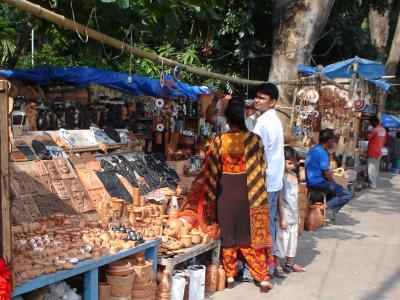
Terracota Stalls
Although my first day in Bangladesh was a Friday, the Muslim holy day when most shops and offices are closed, I got a rickshaw to the New Market area, and managed to find a row of book stalls, one of which had a pirate-copy of the 4th edition Lonely Planet 'Bangaldesh' guidebook. It is amazing how disconcerting it feels to be in a big city and have no idea of the direction of anything, or what the main buildings and areas are. I'm much happier when I have a map to look at.
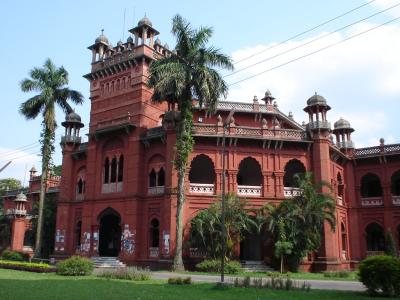
Curzon Hall - 1
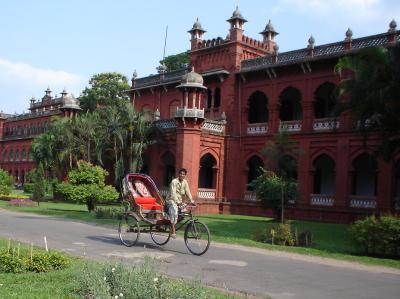
Curzon Hall - 2
Although in the new city, some older buildings still remain. The fine brick Curzon Hall was built in 1905, and is now part of Dhaka University. The Hazrat Haji Shabaz Mosque was built in 1679; the tomb of its builder, the Dargarh Sharif, is just across the courtyard.
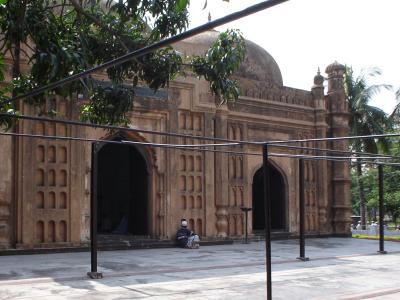
The Hazrat Shabaz Mosque
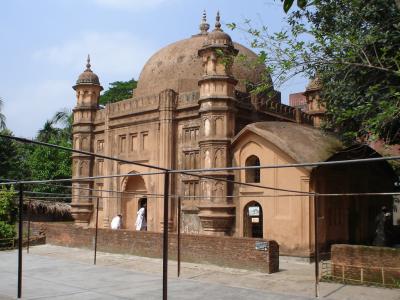
Dargarh Sharif
Next to the Mosque is the astonishing 'Shrine of the Three Leaders', an ingeniously designed canopy structure.
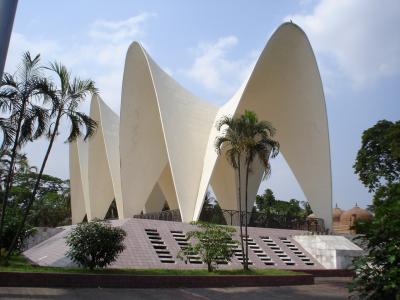
Memorial to the Three Ministers
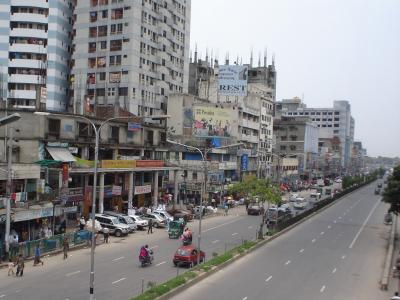
In the New City
The new city area of Dhaka is surprising light and airy, with wide streets and boulevards. There are plenty of modern multi-storey buildings, with numerous shopping plazas and a pleasant lake-side park in the rich Dhanmondi district, and skyscrapers representing many international finance businesses in downtown Motijheel. Other parks are found near the University.
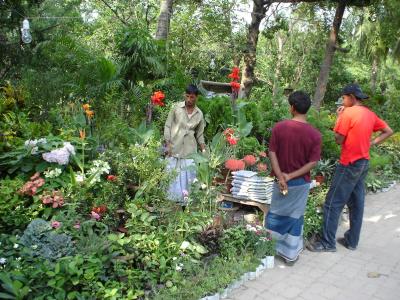
A Flower and Plant Salesman
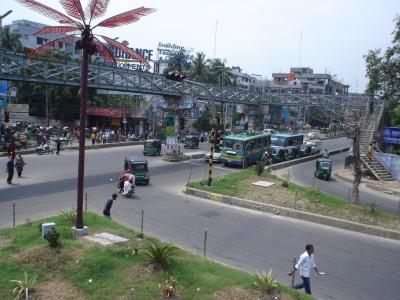
Dhaka Street Scenes

A Double-Decker Bus
To the north of the city, in the Crescent Lake Gardens, is the tomb of General Ziaur Rahman. Close by is the modern National Assembly building, designed by Louis Kahn.
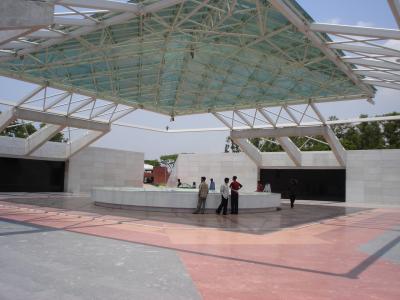
General Zia's Tomb
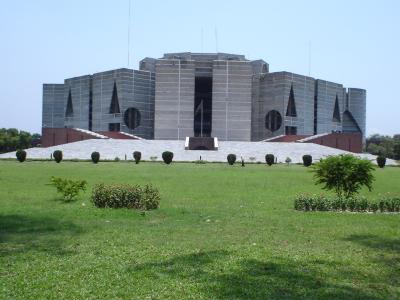
The National Assembly
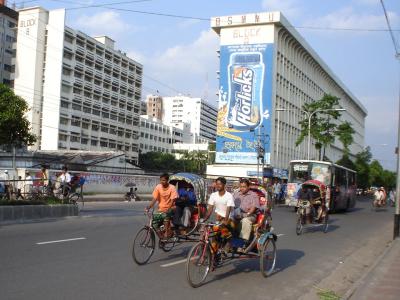
The Wide Streets of New Dhaka
Another view of New Dhaka's wide streets and modern buildings. Towards the River Buriganga, the old city starts; its narrow alleys and twisting streets in stark contrast to the more modern quarter. I went to look at the river: a busy and bustling highway of huge numbers of ships, ferries and boats that cross up, down, and along the waters. There are the famous rocket ferries, with their distinctive paddle-wheels, plus a large number of other ferries that ply the numerous waterways of this water-dominated country. Cargo ships and freighters rush down towards the sea, tossing the many water-taxis that criss-cross the river in their wake. I bargained for one of these to take me on a small tour of the river, and got a front-row view of life on the river. Excellent value at just 50 takas for the hour.

Rocket Ferries
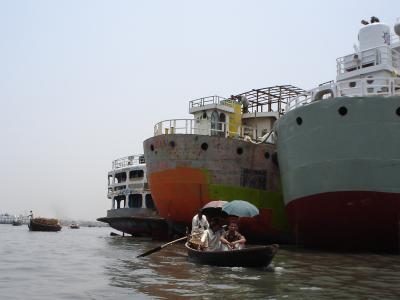
On the River Buriganga
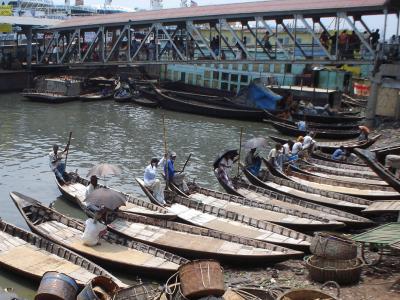
Water Taxis - 1
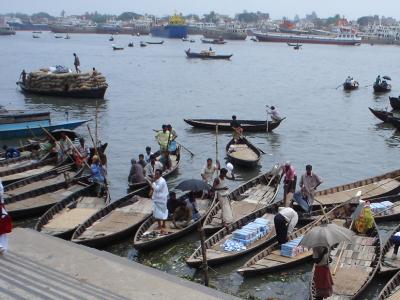
Water Taxis - 2
Back from the river, I wandered through the tiny streets of Old Dhaka. Barely wide enough for two rickshaws to pass in places, they are crowded to capacity by a mass of people hurrying about their business, as the many small shops overflow their stock onto the pavements, vying for space with other hawkers and small traders.
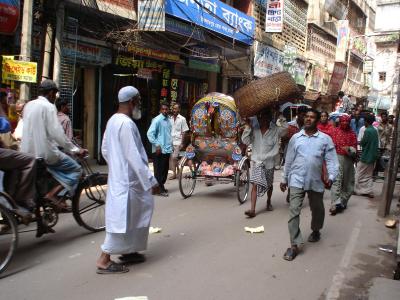
Old Dhaka - 1
In the centre of this seething mass is an island of calm, the Ahsan Manzil. Built in 1872, it was the home of the Nawab Abdul Ghani, and the site of the foundation of the All India Muslim League. Though abandoned for a number of years, it was fully restored in the 1980s to form a most interesting museum. Luckily, a series of photographs exist that show the rooms as they were in 1902; they have been recreated to this period to form a close copy of how they would have looked. Unfortunately, no cameras were allowed inside.
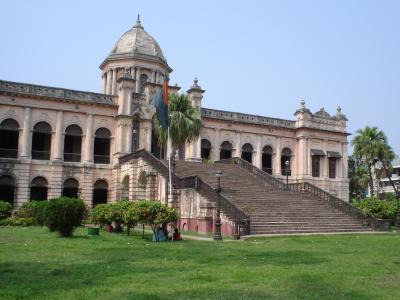
Ahsan Manzil
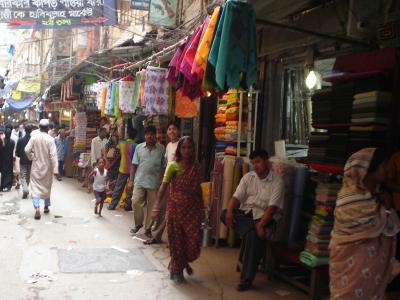
Old Dhaka - 2
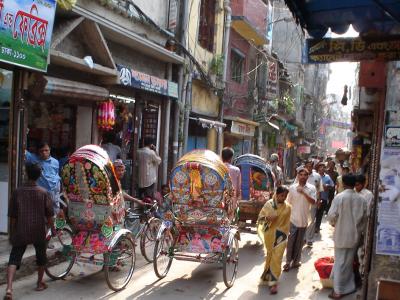
Hindu Street
Posted by travellingtim at May 6, 2005 11:06 AM
